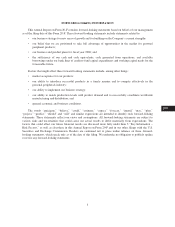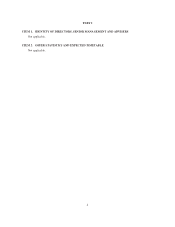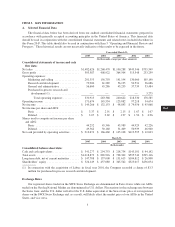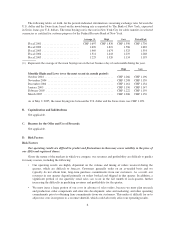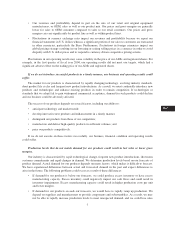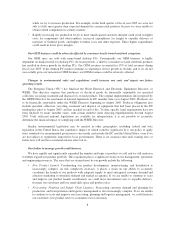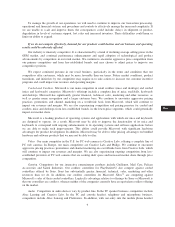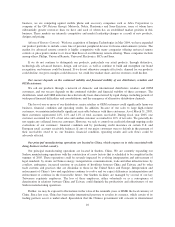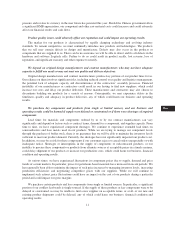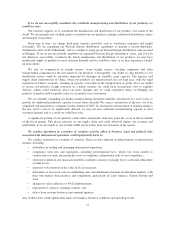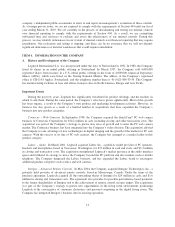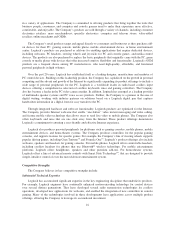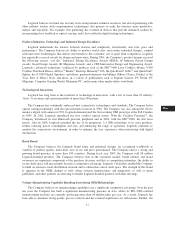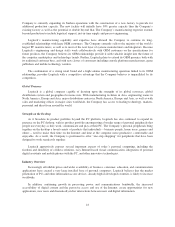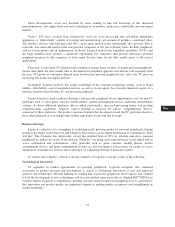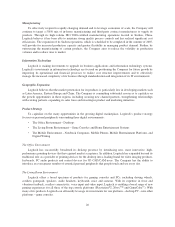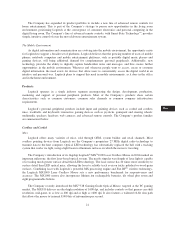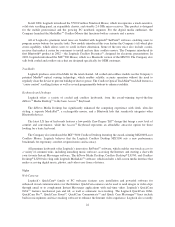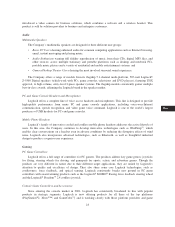Logitech 2005 Annual Report Download - page 51
Download and view the complete annual report
Please find page 51 of the 2005 Logitech annual report below. You can navigate through the pages in the report by either clicking on the pages listed below, or by using the keyword search tool below to find specific information within the annual report.
We may be unable to protect our proprietary rights. Unauthorized use of our technology may result in the
development of products that compete with our products.
Our future success depends in part on our proprietary technology, technical know-how and other intellectual
property. We rely on a combination of patent, trade secret, copyright, trademark and other intellectual property
laws, and confidentiality procedures and contractual provisions such as nondisclosure terms and licenses, to
protect our intellectual property.
We hold various United States patents and pending applications, together with corresponding patents and
pending applications from other countries. It is possible that any patent owned by us will be invalidated, deemed
unenforceable, circumvented or challenged, that the patent rights granted will not provide competitive
advantages to us, or that any of our pending or future patent applications will not be issued. In addition, other
intellectual property laws or our confidentiality procedures and contractual provisions, may not adequately
protect our intellectual property. Also, others may independently develop similar technology, duplicate our
products, or design around our patents or other intellectual property rights. In addition, unauthorized parties have
copied and may in the future attempt to copy aspects of our products or to obtain and use information that we
regard as proprietary. Any of these events could significantly harm our business, financial condition and
operating results.
We are also increasing our reliance on technologies that we license or acquire from others. We may find it
necessary or desirable in the future to obtain licenses or other rights relating to one or more of our products or to
current or future technologies. These licenses or other rights may not be available on commercially reasonable
terms, or at all. The inability to obtain certain licenses or other rights or to obtain such licenses or rights on
favorable terms, or the need to engage in litigation regarding these matters, could have a material adverse effect
on our business, financial condition and operating results. Moreover, the use of intellectual property licensed
from third parties may limit our ability to protect the proprietary rights in our products.
Pending and future lawsuits could adversely impact us.
We are currently involved in a pending lawsuit relating to patent infringement and in a number of lawsuits
and claims relating to commercial matters that arise in the normal course of business. We believe these lawsuits
are without merit and intend to defend against them vigorously. However, there can be no assurance that the
defense of any of these actions will be successful.
Pending and future litigation and disputes arising over patent infringement claims, commercial matters, or
other litigation involving us, whether as plaintiff or defendant, regardless of outcome, may result in significant
diversion of our technical and management resources, result in costly litigation, cause product shipment delays or
require us to enter into royalty or licensing agreements, any of which could adversely affect our business,
financial condition and operating results.
Our effective tax rates may increase in the future, which could adversely affect our operating results.
We operate in multiple jurisdictions and our profits are taxed pursuant to the tax laws of these jurisdictions.
Our effective tax rate may be affected by changes in or interpretations of tax laws in any given jurisdiction,
utilization of net operating loss and tax credit carry forwards, changes in geographical allocation of income and
expense, and changes in management’s assessment of matters such as the realizability of deferred tax assets. In
the past, we have experienced fluctuation in our effective income tax rate. Our effective income tax rate in a
given fiscal year reflects a variety of factors that may not be present in the succeeding fiscal year or years. There
is no assurance that our effective income tax rate will not change in future periods. If our effective tax rate
increases in future periods, our operating results could be adversely affected.
We are exposed to increased costs and risks associated with complying with Section 404 of the Sarbanes-
Oxley Act.
Section 404 of the Sarbanes-Oxley Act of 2002 requires that public companies in the United States evaluate
and report on their systems of internal controls over financial reporting. Further, Section 404 requires the
13
CG
20-F
LISA


